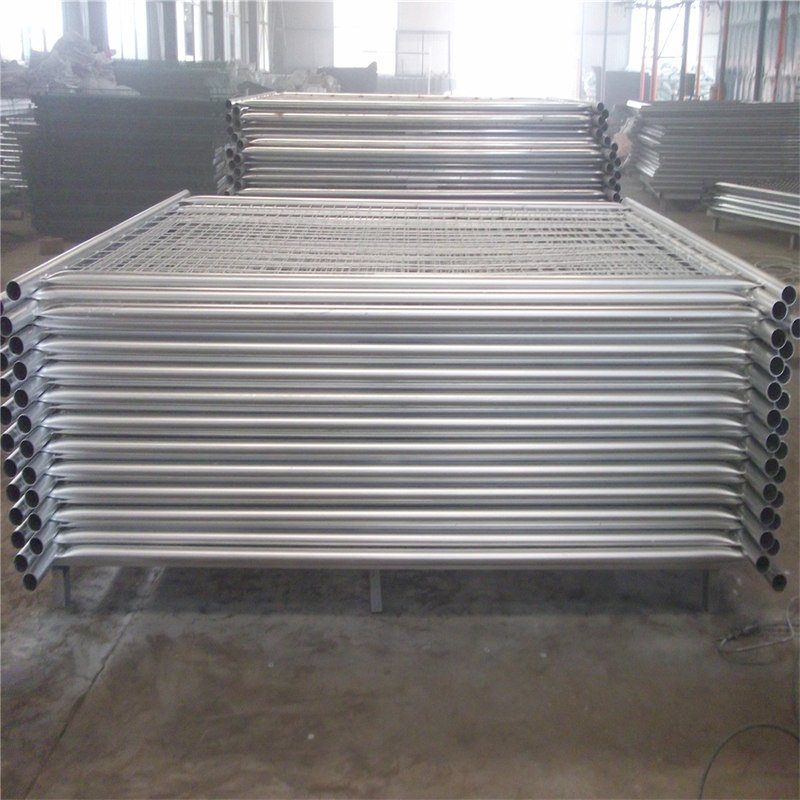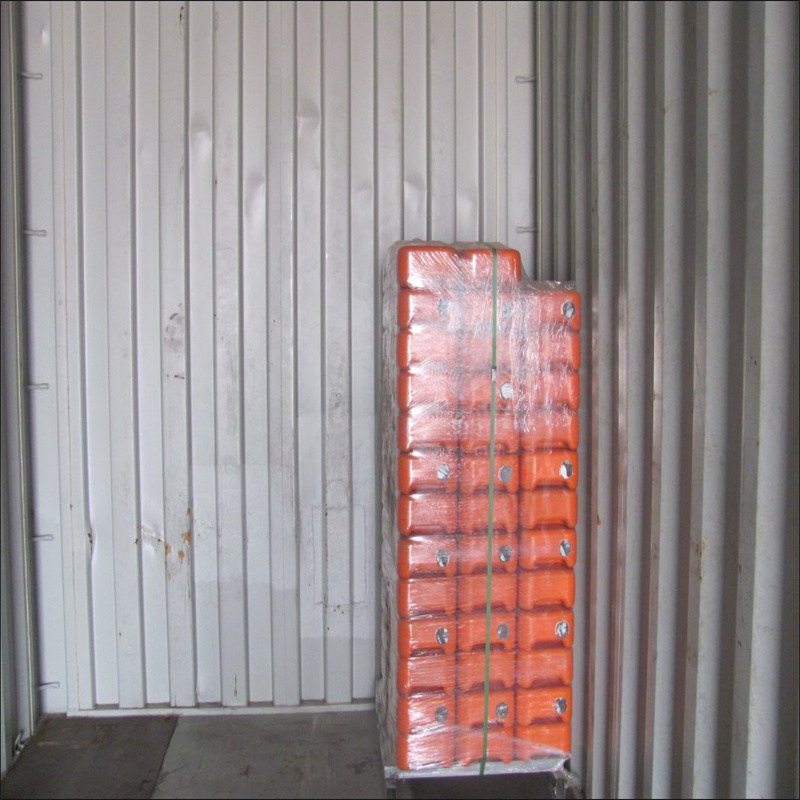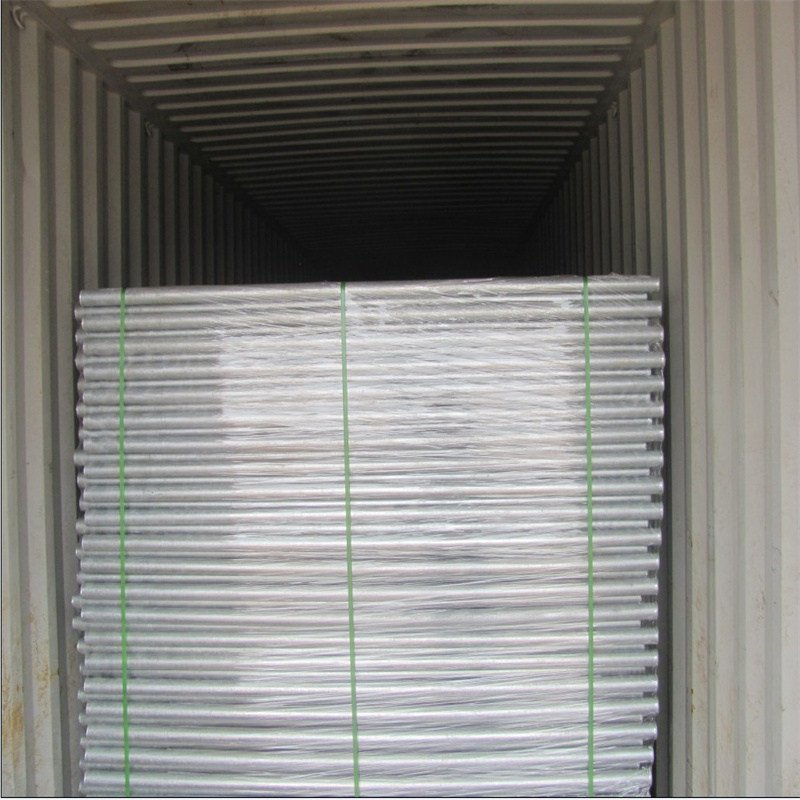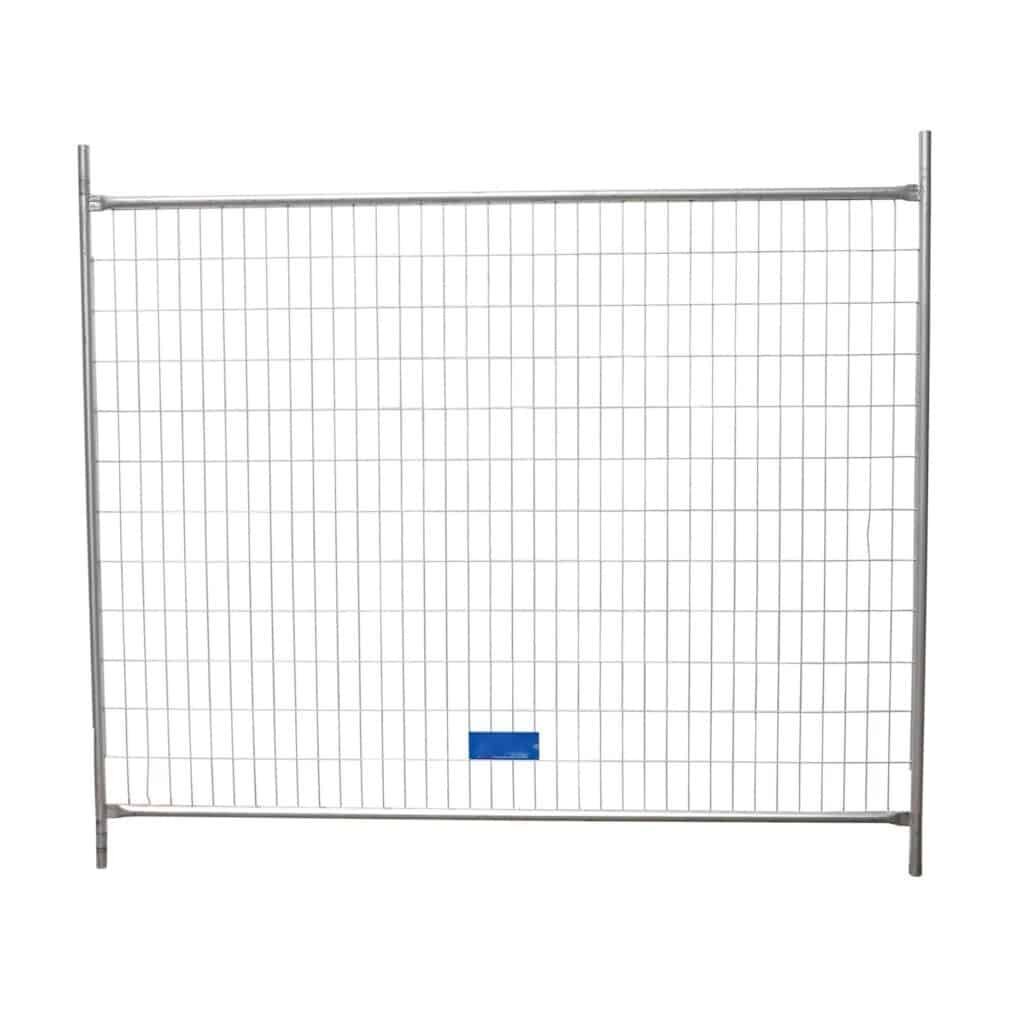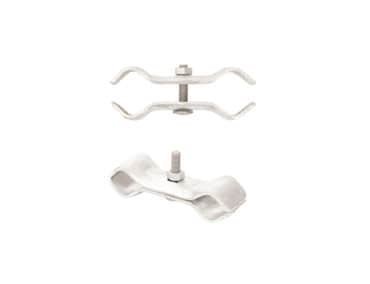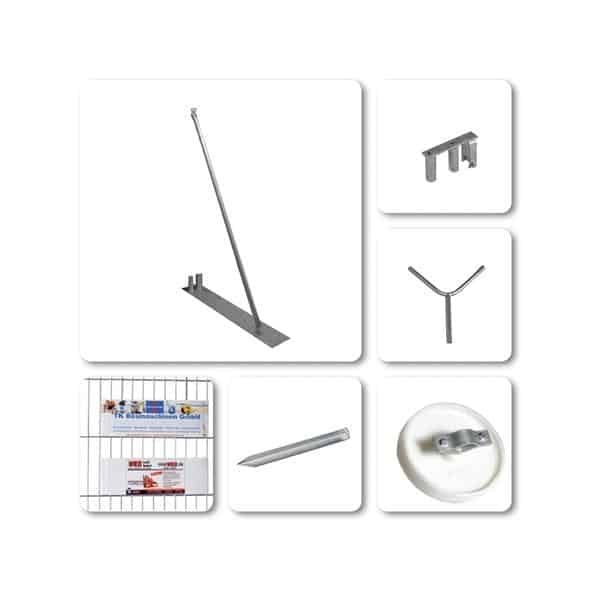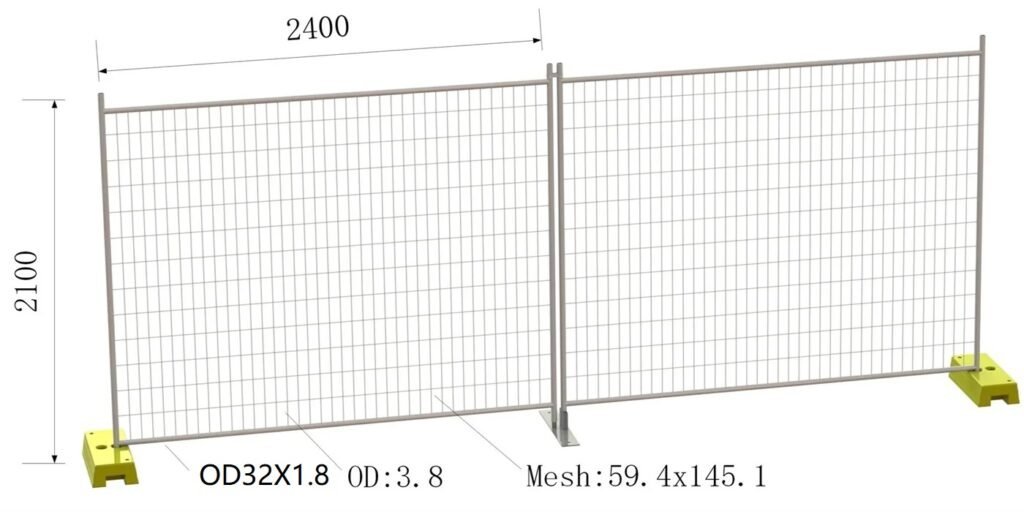China Standard Temporary Fence: Cost-Effective Solution
- MOQ: 250 kete
- 40HC Container Loading: 560 kete
- 20GP Container Loading: 250 kete
- Production Time: 14-28 days for 5000 kete
- Waehere HS: 7308900000
- Price: $13.88-$37.18 (landed at any port in NZ or AU)
- Pōkai ana: Metal stillages
- Paerewa: AS4687-2007, Aotearoa 3750
- Tae: Silver and RAL colors available
- Rongoā: 50 g/m², 300 g/m², 600 g/m²
- Whakamārama:
- Speicifcations
- Advantages & Applications
- Nga pātai e uiuitia ai
China Standard Temporary Fence: Durable and Cost-Effective Solution
China’s standard temporary fencing is widely recognized as a reliable and cost-effective choice for medium-security applications. As market competition in the temporary fencing industry intensifies, specifications have shifted to meet the demands of both local and international clients, particularly in regions like New Zealand. Chinese suppliers often adjust specifications to meet price expectations, but BMP takes a firm stance on transparency, kounga, and adherence to client specifications.
The temporary fencing panels and plastic bases are delivered in steel pallets.
The loading quantity depends on the products and container sizes.
| Container Type | only panels | whole set(1panel+ 1base+ 1clamp) |
| 20’GP | 270rorohiko | 240huinga |
| 40’HQ | 700rorohiko | 5560 huinga |
Ngā Āhuahira:
- Modular parts make installation quick and easy.
- No need for digging holes or laying foundations, saving time and effort.
- Galvanized panels are durable and built to last.
- UV-resistant base for a longer lifespan.
- Many fence kits are available for different needs.
- Meets Australian Standards AS 4687-2007 for safety and quality.
Specification Details
The China Common Standard for temporary fencing is crafted with durability and value in mind. This fencing solution combines a strong framework with practical dimensions, making it suitable for a range of settings. The standard fence dimensions are 2100mm in height and 2400mm in width, with a mesh opening size of 60mm x 150mm. This mesh pattern provides stability and visibility, while the 32mm x 1.80mm frame diameter and 3.8mm mesh wire thickness contribute to its sturdiness and longevity.
For Chinese suppliers, these specifications are a response to intense market competition. Historically, suppliers have offered alternatives with a 1.80mm wall thickness and 3.8mm wire diameter to lower costs while still delivering a reliable product. However, BMP has chosen to fully honor customer specifications rather than adjust them to fit lower-cost alternatives, maintaining a tolerance standard of ±0.05mm, well within modern manufacturing capabilities.
| China Standard Version Specification | Ngā Taipitopito |
|---|---|
| Putanga | Paerewa Pūnoa o Haina |
| Whakamārama: | Strong, sturdy, cost-effective |
| Outer Diameter (OD) | 32mm x 1.80mm |
| Teitei | 2100mm |
| Whānui | 2400mm |
| Whakatuwheratanga Mesh | 60mm x 150mm |
| Waea Rōrahi | 3.8mm |
| Ngā Waea Whakapae | 17 |
| Ngā Waea Poutū | 38 |
| Taumaha | 20.3 kiro |
| Container Loading Capacity | 40HC: 690 PCS |
| FOB Xingang Price (USD) | Available upon request |
Advantages of China’s Standard Temporary Fence
- High Durability: The thicker 1.80mm wall and 3.8mm wire offer significant resistance to impact and weather. These qualities make it a long-lasting solution, suitable for repeated use in different environments.
- Cost-Effective for Quality: The China standard fence provides solid durability without excessive cost, making it affordable for clients needing both resilience and budget-friendly options.
Disadvantages
- Heavy Weight: This design’s weight (20.3 kg per panel) requires more resources for transport and setup, which may not be ideal for projects needing rapid, lightweight installation.
- Not Ideal for High-Security Needs: While durable, this fence is more suitable for medium-security needs rather than the highest-security applications, as it lacks additional reinforcements like smaller mesh openings or higher wire gauge.
Best Applications China Common Standard temporary fence
The China Common Standard temporary fence is well-suited for construction sites, ngā takahanga tūmatanui, and other medium-security locations. It offers the necessary strength and stability to secure perimeters without the added costs associated with heavy-duty or high-security fencing. This fence type is ideal for projects that require a sturdy, reliable barrier without compromising budget considerations.
Commitment to Quality: BMP’s Approach
I BMP, our approach stands out. Unlike many suppliers who adjust specifications to reduce costs, BMP ensures complete adherence to the specifications requested by our clients. We uphold the updated tolerance standard of ±0.05mm, ensuring each fence panel meets exacting standards. BMP believes in providing full transparency, reliability, and the highest standards of quality for every order. For detailed pricing information and tailored solutions, please reach out to our team.

